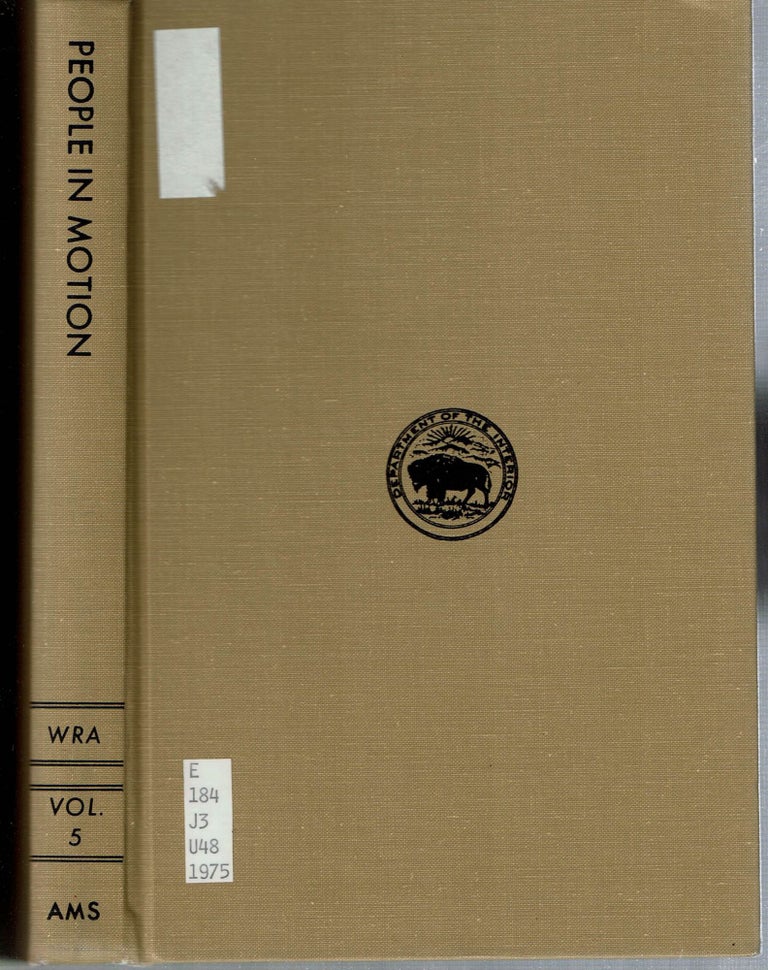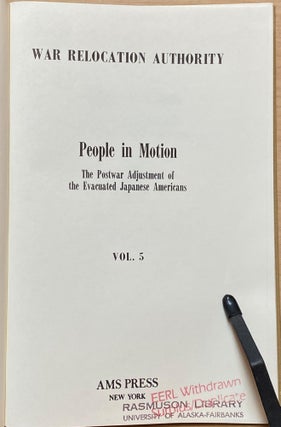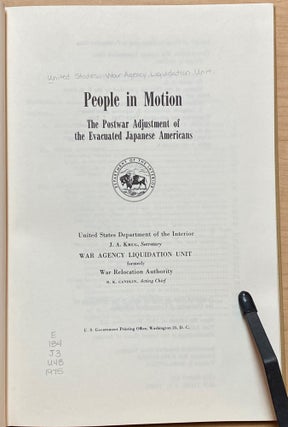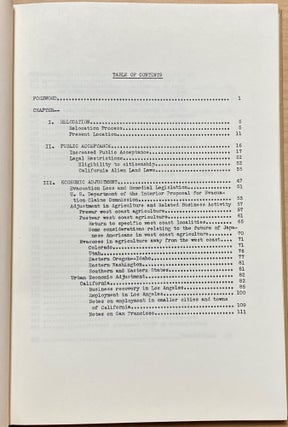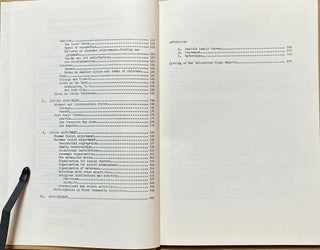People in Motion : The Postwar Adjustment of the Evacuated Japanese Americans
New York: AMS Press, 1975.
Reprint. Hardcover. Very Good with no dust jacket. Item #15062
ISBN: 040458005X
Library stamps/marks/labels, otherwise light wear. Crisp hardcover.; Facsimile reprint of 1947 edition published by the United States Government Printing Office, also known as the Cullum Report. "The stated goal of the study was to "Analyze the effects of the evacuation from the west coast, and to complete the study of the relocation aspects, such as the new distribution of the people, and adjustment problems that relocated people continue to face in order to provide an adequate history of the effects of the evacuation upon the evacuated people and the country." The main study centers were to be Chicago , Denver , Los Angeles , and Seattle, with secondary sites in California's Santa Clara Valley, the Snake River Valley, and Salt Lake City. ... After a brief summary of "relocation" from the concentration camps and some basic demographic information, the core of the book is made up of four chapters examine various aspects of Japanese American life as of early 1947: "Public Acceptance," "Economic Adjustment," "Housing Adjustment," and "Social Adjustment," with the second and fourth making up the vast majority of the book.The relatively short chapter on "Public Acceptance" cites improved attitudes of the general public towards Japanese Americans, largely crediting the war record of Nisei soldiers , which is noted at length. Much of the rest of the chapter gives a detailed history of the alien land laws , as well as updates on the then current Oyama case and the just concluded rejection by California of Proposition 15 . The lengthy chapter on "Economic Adjustment" looks in detail at both rural and urban areas, with particularly detailed sections on the areas where WALU fieldworkers were stationed. While noting the loss of the prewar agricultural base that largely had sustained the ethnic community and the many more Japanese Americans on public relief, the authors also cite a generally good employment situation, with higher wages and greater opportunities in mainstream business and government, though details differ greatly from place to place. A shorter chapter on "Housing Adjustment" summarizes the situation in various cities, with much attention focused on Los Angeles, which had the worst situation at the time. The lengthy chapter on "Social Adjustment" is largely focused on the issue of self-segregation versus integration, noting the pros and cons of all Japanese American veterans organizations, churches, recreational groups, and the like.While noting continuing discrimination, the general tone is optimistic, with the a brief conclusion citing the future of Japanese Americans as hinging on two primary factors: "the presence of absence of economic discrimination, and the belief which Americans of Japanese descent come to have about their acceptance in American life."" - Brian Niiya, Densho Encyclopedia. Primary social science research on the immediate aftermath of the closing of the Japanese American resettlement camps of WW2 and the ability of the internees to resume their lives. ; War Relocation Authority; Ex-Library; Vol. 5; (v), 269 pages.
Price: $99.95

